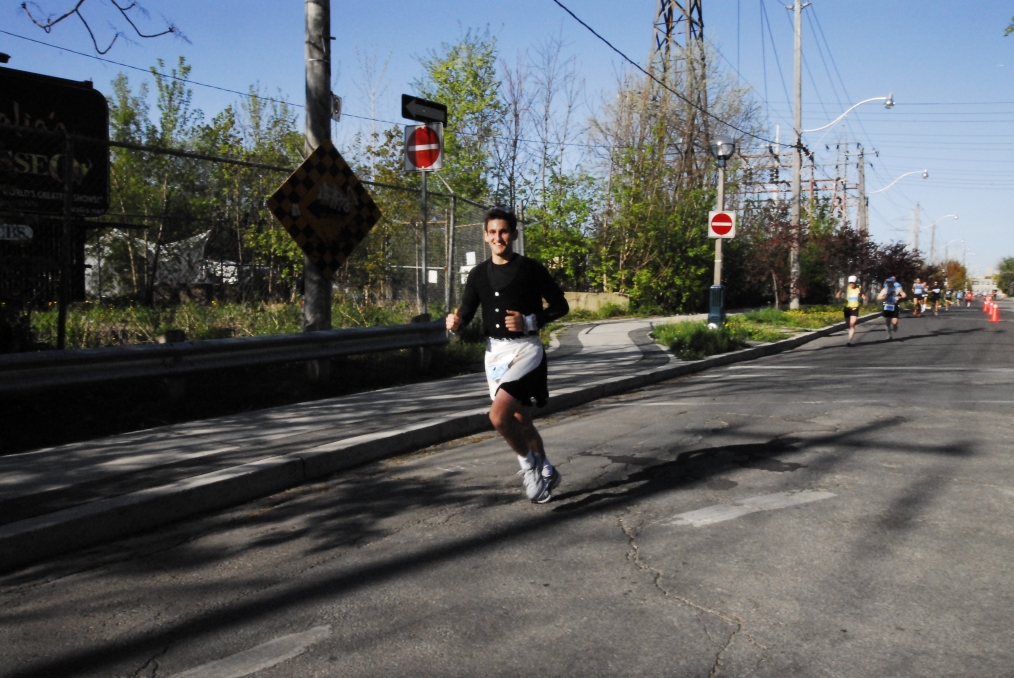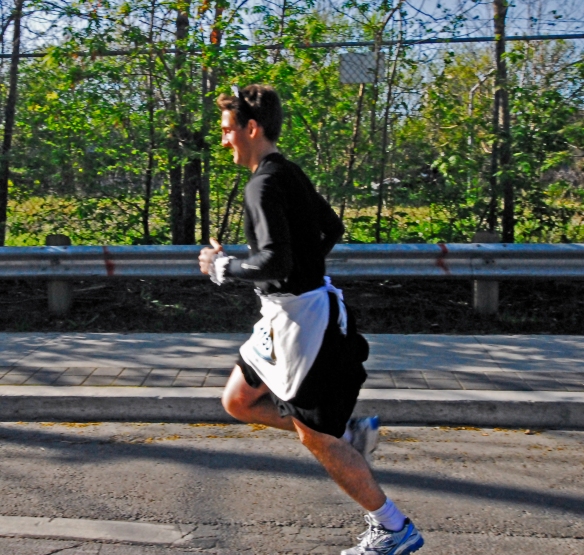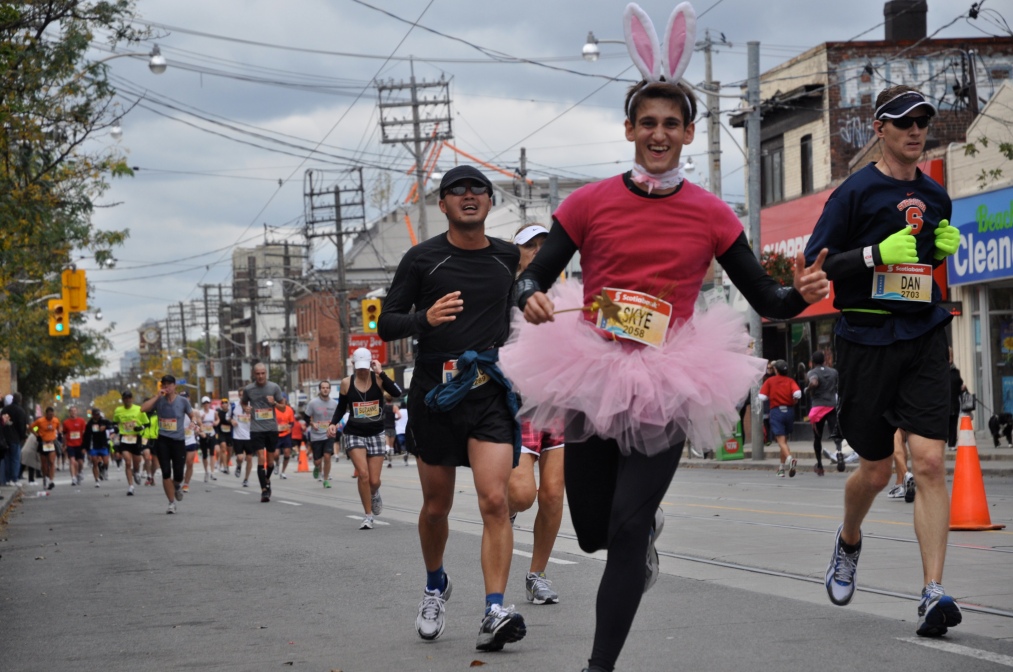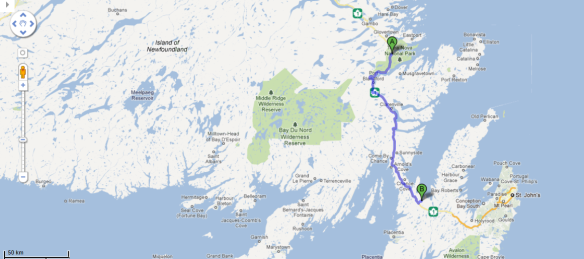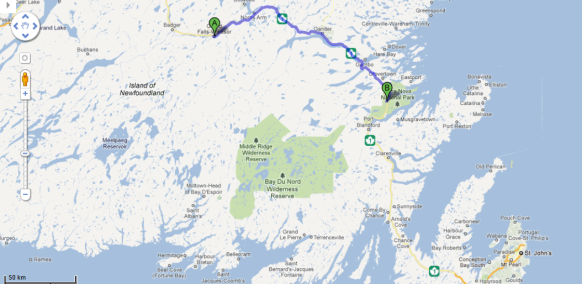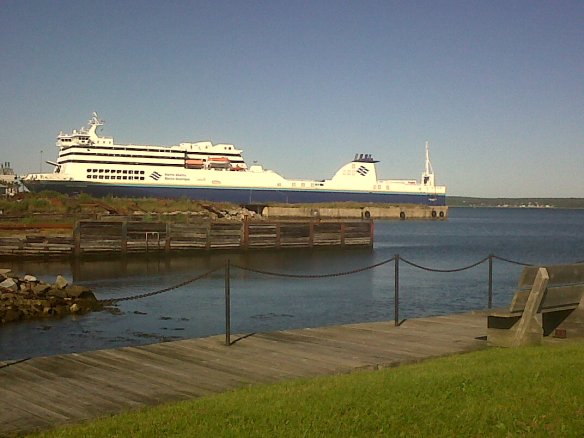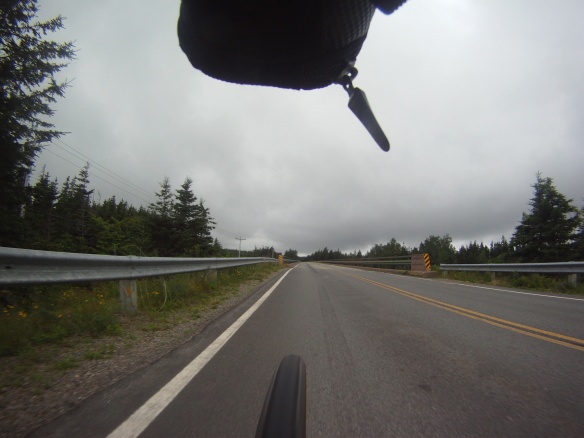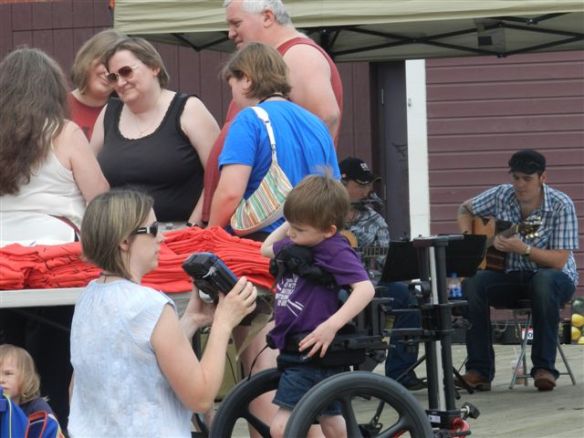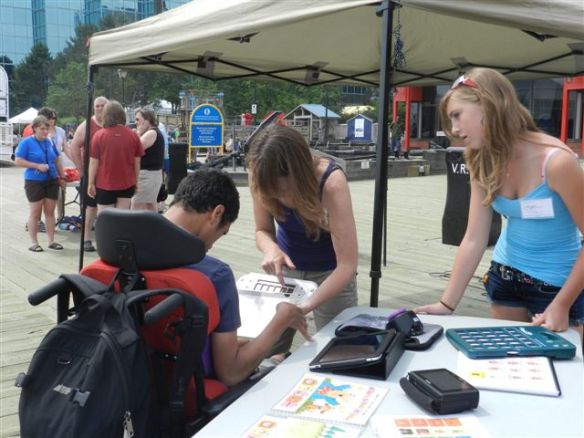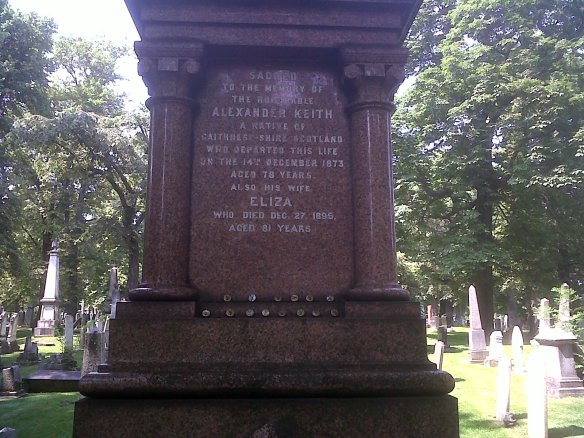It’s been a busy week, but alas, as promised, here’s a blog post on running a marathon in a French Maid costume.
Some of you know about marathon running. However, a vast majority of you think I’m a strange, strange person. (To gain greater context to this post, you can read Kerr’s (my brother) and my story: http://kilometresforcommunication.com/stories/ )
What possesses me to run marathons? Running is mostly mental. If you’re running to the limits of your ability, there will always be a point in the run when you ask yourself: “why am I doing this?” If you aren’t able to answer this question, your run ends there. For the first 30km I project how lucky I am to be able to move one foot in front of the other, smell, see and feel the world as I do. I would be taking the safety, security and luck of my life for granted by not focusing on the beauty of striding in the moment. The minor discomfort only exists if I perceive and focus on it. I’m running because I can.
The final 10-12km is different. The pain becomes loud and rude. More powerful motivation is needed. I project the people I’ve met who communicate in different ways and their stories, my brother’s story, and all the emotions, frustrations, and memories associated with the misunderstandings and disconnect I’ve witnessed my brother endure. If these Canadians who speak with AAC and my brother can be so resilient, strong, and triumphant; so can I. This is a numbing reminder to my perception that my discomfort is temporary and escapable. I’m running to show my commitment. I’m running to create awareness. My knee doesn’t want to lift. I’m running because I can. My calves are seizing. I’m running because this is the least I can do. I’m running to inspire. Why am I doing this? Can’t I stop? I’m running because I can do something simple that makes a difference. My stomach is going to let loose. I’m running because I love someone. I’m running because I want everyone to know how to include people of all abilities.
What possessed me to run in a French Maid costume? I would say it comes down to having a powerful motivator in my life (my brother) and a few really good friends with a sense of humour. If I’m going to run for 42km, I’m going to do it for a cause. I better kill two birds with one stone; otherwise, it just wouldn’t seem worth it. Running is a mental battle. It’s easier to run 42km through woods distracted by scenery and the challenge of rocks and roots than it is to stay concentrated and calm kilometres after kilometre on pavement running next to the same people. Wearing a costume helps with that mental battle. People start laughing and cheering. 42km becomes less lonely.
I ran the race in 3 hours, 22 minutes, 30 seconds. I had a bizarre day before the race. My eating was not on schedule, and I didn’t eat my dinner until after 10pm on Saturday night—although I had been carb grazing all day. Shortly after eating, I went to bed. Needless to say, I didn’t digest my meal as I should have. I woke up at 4:30am on Sunday to eat a good breakfast, digest it properly, and have ample unstressed time to change into my French Maid costume. Around the 23km mark, there was no bargaining with my stomach. Sweaty, and in full race gear, I abandoned the sub-3hr pack I was running with and dashed into a Tim Horton’s. I ran through the restaurant, efficiently found the washroom. A couple minutes later I ran back through the restaurant again, back onto the race course, and tried to find my rhythm again with a different pack of runners. Those employees and customers in that Tim Horton’s saw a sight they probably won’t forget for a long time.
How do you work up to running a marathon and prepare for it?
It’s getting late and that’s a whole other blog post. If people are interested, I’ll write a post on preparation.
I’ve saved the most important for last! The clear cut reason I ran a marathon in costume was to create awareness for the different ways people communicate. If you haven’t already, please read and share the following excerpt from my last blog post:
“
I think that isolation and systemic discrimination can stem from uncertainty. Below are some key points about how to be an agent of inclusion, and how to properly interact with people who communicate differently.
* Be curious. Ask how the person communicates. Give the individual time to respond. Observe what body parts he/she controls, if the person has a communication device, a letter board, or blinks. There are many forms of communication. Engage. Observe. Keep an open mind. Be patient. Be enriched.
* “Ask one question at a time and wait for a reply.” (ACCPC, 2009)
* “Talk directly to the individual, not to the person who may be accompanying him/her.” (ACCPC, 2009)
* Watch for body movement—someone may operate a communication device using his or her head, knee, toes, etc. Don’t walk away if you notice the person using their computer. It may take him/her a minute to assemble their sentence.
* “Speak naturally and clearly, using your normal tone, volume and rate.” (ACCPC, 2009)
* Try to establish a yes and a no—“show me your ‘yes’”. Observe how the person responds.
* “Do not speak about the person or refer to the person in the third person when in his/her presence.” (ACCPC, 2009)
* Always assume ability.
“
A marathon is unbearable if it’s lonely. So is life. We all run our own races, but we all need some help and companionship to get to the finish line.


